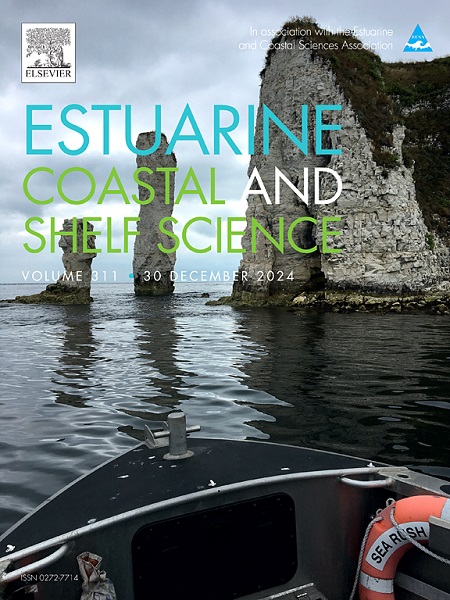Larval dispersal dynamics of Maja squinado in the Northwestern Mediterranean: a biophysical modeling approach
IF 2.6
3区 地球科学
Q1 MARINE & FRESHWATER BIOLOGY
引用次数: 0
Abstract
The Mediterranean spinous spider crab, Maja squinado (Herbst, 1788), is a prized crustacean exploited by Mediterranean coastal fisheries, contributing to local economies and culinary traditions. While stock declines have been reported in some regions, other areas continue to sustain fishing activities, albeit under pressure. Understanding the species' demography is therefore essential for effective future management. To investigate the larval dispersal dynamics of M. squinado in the Mediterranean, a biophysical model was developed, incorporating biological and ecological data such as larval duration and spawning habitats. The tool Ichthyop, designed to study ichthyoplankton dynamics, was employed to perform simulations spanning the period from 2010 to 2020. These simulations were analyzed in the context of global surface water warming trends, yielding maps that illustrated trajectory density, system connectivity, and variations in larval density and dispersal distance over time. The comparative analysis of various scenarios revealed the significant impact of environmental variations on larval connectivity. Specifically, the Tunisia-Sardinia-Corsica complex exhibited strong connectivity, while the Balearic Islands appeared isolated due to the species’ short pelagic larval duration (PLD). The findings highlight the utility of biophysical models in hypothesizing population declines in isolated areas and underscore the necessity of employing diverse modeling approaches at multiple spatial and temporal resolutions. Kernel density estimation (KDE) maps were selected to analyze and visualize the observed simulation scenarios. The results emphasize the importance of considering these changes, particularly the synergies between environmental and biological parameters that influence larval dispersal and connectivity in this species. Such approaches could enhance future conservation and management strategies by accounting for the complex interactions driving population dynamics within the context of a changing Mediterranean ecosystem.
求助全文
约1分钟内获得全文
求助全文
来源期刊
CiteScore
5.60
自引率
7.10%
发文量
374
审稿时长
9 months
期刊介绍:
Estuarine, Coastal and Shelf Science is an international multidisciplinary journal devoted to the analysis of saline water phenomena ranging from the outer edge of the continental shelf to the upper limits of the tidal zone. The journal provides a unique forum, unifying the multidisciplinary approaches to the study of the oceanography of estuaries, coastal zones, and continental shelf seas. It features original research papers, review papers and short communications treating such disciplines as zoology, botany, geology, sedimentology, physical oceanography.

 求助内容:
求助内容: 应助结果提醒方式:
应助结果提醒方式:


